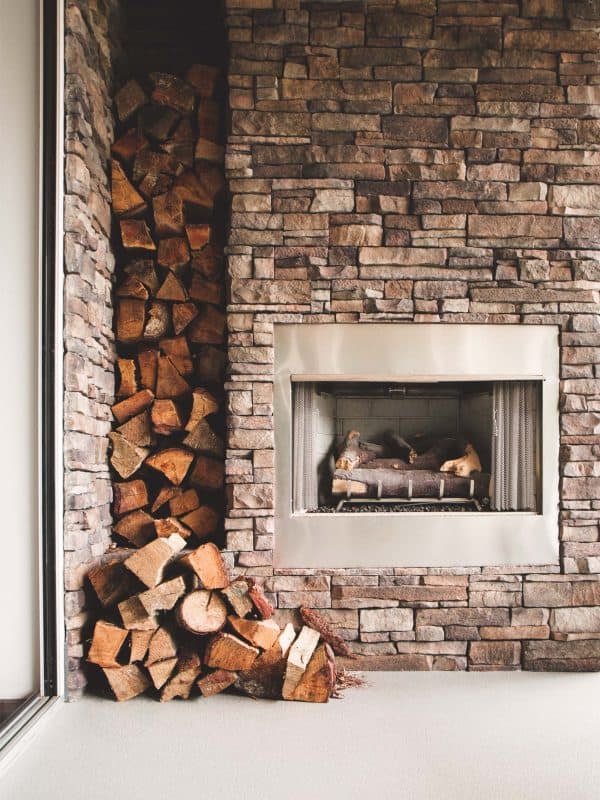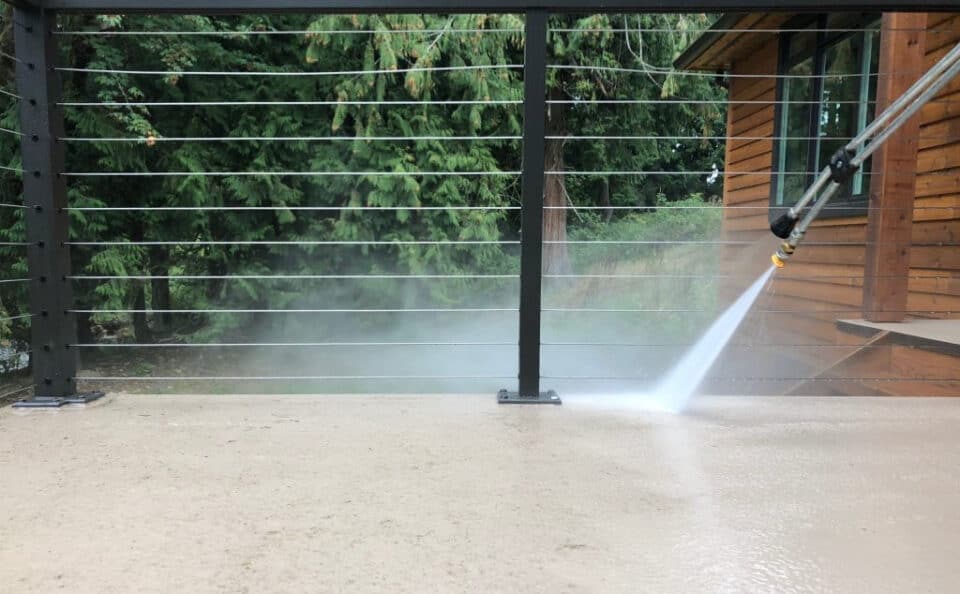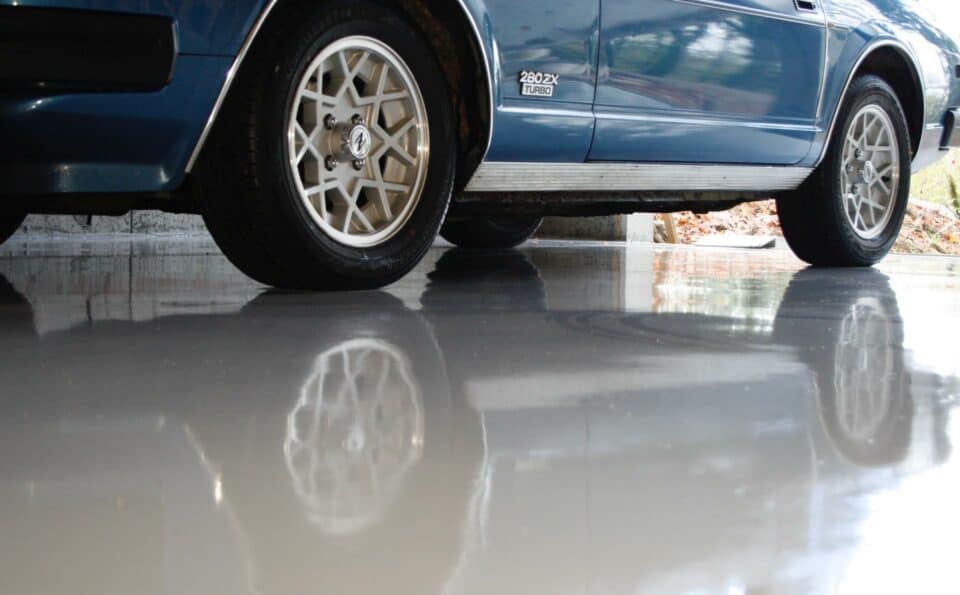Choosing The Best Option For Heating Your Deck
If you’re like me, you don’t like to be cold. Winter can drive us indoors more than we’d like to be. The good news is that there are a lot of attractive and easy options to heat an outdoor deck space. Some options are going to be better for your deck than others. Below, we address different ideas that we feel are safe for a urethane or waterproof deck membrane. And with so many products available, there is something for every budget. So if you have a deck or plan to build one, read on for recommendations and safety tips.
The Fireplace
Always inviting, especially on chilly fall and winter evenings. It is more complicated to add a fireplace to an existing deck so we suggest doing it before building the deck. There are 3 main fuel types to consider. If you have one already installed then continue reading for a few safety tips.
Propane or natural gas is a safe option for a combustible deck surface. Choose cool-touch glass, if available, for safety. Clean annually to prevent clogging. They have the advantage of being able to vent out horizontally. While there are ventless systems they are highly sophisticated and should be well researched before considering.
Wood burning is a beautiful option and we understand the appeal. Here’s some things to think about before going with this idea. Since you will need a chimney you can expect to pay more for installation than gas. You should also plan on installing a hearth just as you would for an indoor fireplace. If you do not have a hearth then we suggest placing a fire mat in front to protect from damage that sparks can cause to the urethane coating. Fire mats are available from amazon and other sellers for less than $100. We recommend that the fire mat is stored somewhere while not in use.
For safety, protective screens should always be used for all options.
Outdoor Patio Heaters
An effective patio heater allows you to use your outdoor space all year. They come in a variety of styles, including tall with a dome shaped top, pyramid shaped with a showy flame inside a glass tube, or wall and ceiling mounted to take up less space. With so many options here’s a few things to consider when searching for the right heater for your space.
Fuel type
Heaters come in 3 fuel types. Propane, natural gas, and electricity.
Propane is the most common choice which offers more mobility and they don’t require a professional to install them. The flip side is that propane tanks have to be refilled and propane is expensive.
Natural gas provides a constant supply of fuel which is convenient. No tank is needed which takes up space. The downside is that you need to hire a professional to install the gas line.
If you have an electrical outlet available then electrical heat is an option. The units are less expensive than gas and heat up quickly. They are also safe to use in enclosed spaces. You’ll want to keep the electrical cords tucked out of the way so they don’t become a tripping hazard. Even though the units are waterproof, we still suggest they go in a semi-covered place.
Safety
The biggest factor for safety is fuel efficiency and heat output. Heat is measured in BTU’s for propane and watts for electricity. A good rule of thumb to follow when deciding on a propane heater is 5,000 BTU’s per 100 square ft.
Tilt-over protection. Patio heaters should be placed on a flat surface but still look for anti-tilt devices. Consider your space. If it gets a lot of wind, you may want to consider a wall or ceiling mounted heater. Also a good option if you will have small children around.
Look for a CSA safety rating. This gives a heater a seal of approval, meaning it has been tested by a third party to evaluate it.
Any heater that has flames should have a thermocouple. A handy device that shuts off the gas valve if the flame goes out. This is essential if your flame should be blown out in high winds.
Another factor is surroundings. Remember that patio heaters are designed for outdoor and semi-outdoor spaces. Adequate ventilation is important to prevent carbon monoxide buildup.
All outdoor heaters should be pretty heavy to keep them from blowing over. So check the weight of the heater or fire pit table before purchasing. Make sure that your deck can handle the weight of the heater as well as the weight of the people that will be on the deck. The last thing you want is a disaster.
Heater Style
Freestanding is as it sounds, portable. These are the tall, dome-shaped heaters that first come to mind when you think of a patio heater. They can also be a pyramid shape with the flames shooting vertically in a glass tube. Or on a stand with an infrared heater above.
Wall or ceiling mounted are your safest option. If you have the outlet availability, we highly recommend purchasing one or two. They are out of reach for children and use infrared electric heat. They also heat up instantly.
Table top heaters come in the form of a fire bowl that sits on the tabletop or a fire pit table that become part of your deck furnishings. Both are safe options for a combustible deck surface since they use propane and they are portable.
Fire Pits
I watched a video on the SoloStove website that shows this wood burning fire pit on a wood deck. I’ve done some research to try to find out if these smokeless fire pits (SoloStove and Breeo X) are truly safe for a wood deck. They get up to 200 degrees Fahrenheit below its stand. It probably won’t catch your deck on fire but it could damage your deck’s surface. We do NOT recommend them for a waterproof deck. If you have one and still want to use it on your deck then place it on a fire mat and purchase the screen to keep sparks contained.
Fire Pit Tables
A beautiful and safe option. They come in a variety of styles, including table top options. They can also be placed much closer to your home than a fire pit. This makes them ideal heat options for even small spaces. The heat output varies by model just as with any other option.
Check the owners manual for ceiling height minimums and clearance from vertical walls.
The downside to propane fire pits is that the rings can clog over time. Annual cleaning is encouraged and will help your fire pit last longer.
A tabletop option is a fire bowl. These usually have specific fuels so look at the fuel type before purchasing.
All are attractive and portable which is a huge bonus. The varying sizes makes them easy to work into your space and furnishings. You can also find attractive and safe models that will fit into just about any budget.
Where to Shop
BarStoreUsa.com, HomeDepot.com, amazon.com, BBQguys.com, lowes.com, walmart.com for just a few.
For more ideas on how to use your outdoor space throughout the winter months check out this article from RedFin https://www.redfin.com/blog/ideas-for-using-your-outdoor-space-year-round/



